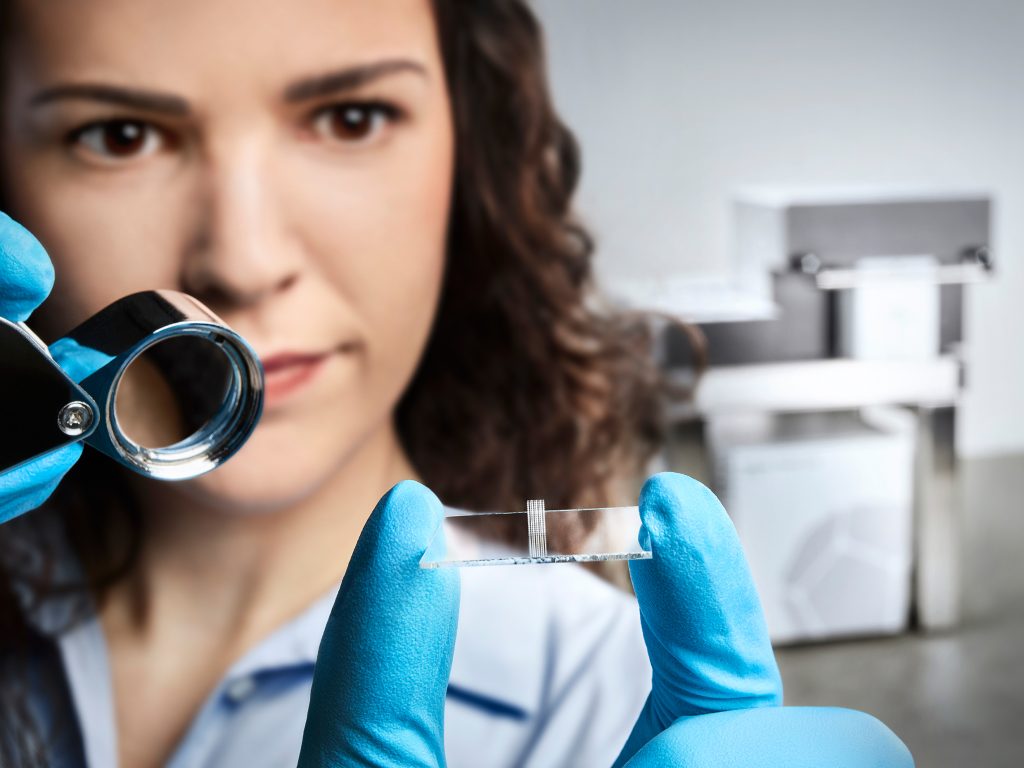Swedish 3D bioprinter manufacturer CELLINK has announced the acquisition of Two-Photon Polymerization (2PP) 3D printer manufacturer Nanoscribe.
Through the deal, worth €50 million in cash, shares and earn-outs, CELLINK is set to take full control of Nanoscribe, while integrating 2PP technology into its own to enable the fabrication of more lifelike soft tissues. Leveraging its new miniaturization capabilities, the firm also anticipates being able to reduce lead times and costs across its product portfolio, in addition to broadening its offering of consumables.
“With Nanoscribe’s state of the art 2PP technology, we will complement our product portfolio and offer a wider range of products to our amazing customers,” said Erik Gatenholm, CEO of CELLINK. “We are combining our strong, purpose driven growth agenda with trailblazing bioconverging technologies for the sake of improving health all around the world.”
“With this strategic acquisition of Nanoscribe, we will further strengthen our market leading position within the 3D bioprinting segment.”

CELLINK’s ‘bioconvergence’ strategy
When CELLINK was established back in 2016, it was set up as a developer of 3D bioprinting technologies, and the firm has since launched six systems including the SLA-based Holograph X and six-printhead BIO X6. Recently, however, the firm has shifted its focus to expanding on its addressable markets and technological portfolio, while embarking on an acquisition-focused ‘bioconvergence’ strategy.
In order to work towards its stated ambition of “leveraging synergistic life science breakthroughs” to bring about medicinal advances, the company bought Scienion for €80 million in August 2020. Essentially, the deal has since allowed CELLINK to increase its market penetration in the pharmaceutical field, and gain a foothold within the diagnostics sector.
In March 2021, the company then acquired the MatTek Corporation for $68 million, in a move that provided it with access to new in-vitro technologies, with the potential to expedite its workflow and advance its 3D bioprinting research. Now, with its acquisition of Nanoscribe, CELLINK has also added 2PP to its portfolio, a technology that could enable it to grow into both the micro-optics and photonics sectors.

Detailing CELLINK’s €50m deal
In its latest acquisition agreement, CELLINK has agreed to buy all Nanoscribe’s outstanding shares on a cash and debt-free basis via a structured €50 million payment. Of the purchase price, €22.1 million is set to be paid in cash, with €11.9 million being provided in newly-issued shares and €16 million via performance-related earn-outs, contingent on the firm meeting its 2021-2023 financial targets.
Following the deal’s completion, Nanoscribe will remain under the same brand and leadership, although its financials will be consolidated into CELLINK’s from Q2 2021. For FY 2021, Nanoscribe is projecting a turnover of €15.4 million, and moving forwards, CELLINK expects to generate recurring revenue through its new implant, microneedle, membrane, and omics consumable product lines.
At CELLINK’s AGM last month, its board of directors formally approved the acquisition, and the firm says that it’s now aiming to wrap-up the deal “as soon as reasonably possible,” with Hengeler & Müller, Duff & Phelps and Zacco already lined-up to advise on the transaction and oversee its completion.
Bringing 2PP and bioprinting together
Founded in 2007 by scientists from the Karlsruhe Institute of Technology (KIT), Nanoscribe specializes in developing nano, micro, and mesoscale 3D printers and materials. The firm’s proprietary 2PP technology enables the fabrication of tiny ultra-high resolution objects with details down to a level of just 200 nanometers, lending it significant potential within optical and electronics applications.
By acquiring Nanoscribe, CELLINK effectively aims to be the first in the industry to integrate 2PP into its existing 3D bioprinting setup, and develop vascular microenvironments at a subcellular scale, that could prove useful within cellular studies, as well as serving as a basis for a range of novel lab-on-a-chip devices.
In line with the firm’s broader bioconvergence strategy, the move is also expected to further its R&D into realistic soft tissue architectures that display greater cell viability. In fact, CELLINK says that the life science industry is going through a “very exciting transformation,” in which miniaturization is helping to reduce bottlenecks within genetic sequencing.
Using its newly-acquired 2PP capabilities, the firm therefore stands to reduce the number of preparation steps required within single-cell genomics, accelerating its bioprinting workflow, and it has identified several “strong synergies” with Nanoscribe that will facilitate the “cross-functional adoption” of 2PP across its business.
“We take pride in our state-of-the-art 2PP technology, offering our customers the tools to materialize their ground-breaking ideas,” concluded Martin Hermatschweiler, CEO of Nanoscribe. “We very much look forward to joining the CELLINK Group, together exploring the possibilities with the 2PP technique, and delivering on the Group’s vision to create the future of medicine.”
To stay up to date with the latest 3D printing news, don’t forget to subscribe to the 3D Printing Industry newsletter or follow us on Twitter or liking our page on Facebook
Are you looking for a job in the additive manufacturing industry? Visit 3D Printing Jobs for a selection of roles in the industry.
Featured image shows a scientist holding a miniature Nanoscribe-3D printed filigree structure. Photo via Nanoscribe.



